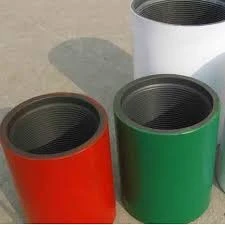- Afrikaans
- Albanian
- Amharic
- Arabic
- Armenian
- Azerbaijani
- Basque
- Belarusian
- Bengali
- Bosnian
- Bulgarian
- Catalan
- Cebuano
- Corsican
- Croatian
- Czech
- Danish
- Dutch
- English
- Esperanto
- Estonian
- Finnish
- French
- Frisian
- Galician
- Georgian
- German
- Greek
- Gujarati
- Haitian Creole
- hausa
- hawaiian
- Hebrew
- Hindi
- Miao
- Hungarian
- Icelandic
- igbo
- Indonesian
- irish
- Italian
- Japanese
- Javanese
- Kannada
- kazakh
- Khmer
- Rwandese
- Korean
- Kurdish
- Kyrgyz
- Lao
- Latin
- Latvian
- Lithuanian
- Luxembourgish
- Macedonian
- Malgashi
- Malay
- Malayalam
- Maltese
- Maori
- Marathi
- Mongolian
- Myanmar
- Nepali
- Norwegian
- Norwegian
- Occitan
- Pashto
- Persian
- Polish
- Portuguese
- Punjabi
- Romanian
- Russian
- Samoan
- Scottish Gaelic
- Serbian
- Sesotho
- Shona
- Sindhi
- Sinhala
- Slovak
- Slovenian
- Somali
- Spanish
- Sundanese
- Swahili
- Swedish
- Tagalog
- Tajik
- Tamil
- Tatar
- Telugu
- Thai
- Turkish
- Turkmen
- Ukrainian
- Urdu
- Uighur
- Uzbek
- Vietnamese
- Welsh
- Bantu
- Yiddish
- Yoruba
- Zulu
pump seating nipple
Understanding Pump Seating Nipples A Key Component in Oil and Gas Operations
In the oil and gas industry, the efficient operation of subsurface pumping systems is critical for optimizing production. Among various components, the pump seating nipple plays a vital role in ensuring the proper functioning of downhole pumps. This article delves into the significance, design, and operational aspects of pump seating nipples.
What is a Pump Seating Nipple?
A pump seating nipple is a specialized fitting located in a wellbore designed to provide a secure connection for the pump assembly. It serves as a stop or seating point for the pump, ensuring that it resides at the correct depth within the reservoir for optimal performance. The primary function of the seating nipple is to support the weight of the pump and facilitate its alignment with the tubing string.
Design and Construction
Pump seating nipples are typically crafted from high-strength steel or other robust materials that can withstand the harsh conditions of downhole environments. Their designs often feature a tapered or conical shape to facilitate easy engagement and disengagement of the pump assembly. Additionally, the nipple may incorporate threads or locking mechanisms to prevent unintentional release during operation.
One of the critical design considerations is the nipple’s resistance to corrosion, given the presence of harsh fluids and gases in the subsurface environment. This is often achieved through protective coatings or using corrosion-resistant alloys that enhance their durability.
Operational Importance
pump seating nipple

In the operation of downhole pumps, the seating nipple ensures that the pump is correctly positioned, thereby maximizing its efficiency in drawing fluids from the reservoir. An accurately seated pump optimizes fluid flow while minimizing wear and tear on the pump components, ultimately extending their operational lifespan.
Furthermore, the seating nipple significantly affects the overall well productivity. An improperly seated pump can lead to issues such as reduced flow rates, increased energy consumption, and potential mechanical failures. Thus, careful consideration of the nipple's design and installation is crucial for maintaining the integrity of the pumping system.
Maintenance and Inspection
Regular maintenance and inspection of the pump seating nipple are essential to ensure its reliability and functionality. Operators should routinely check for wear, corrosion, or mechanical damage, especially after extended periods of operation. Any signs of deterioration could indicate the need for replacement or repair to prevent operational disruptions.
Innovations in technology are also contributing to improved monitoring and maintenance of these components. Advanced downhole sensors can provide real-time data on pressure and temperature, enabling operators to make informed decisions regarding the health of the pumping system and the seating nipple.
Conclusion
In conclusion, the pump seating nipple is a critical component within the oil and gas production framework. Its design, operational importance, and maintenance requirements underscore its role in ensuring efficient and effective subsurface pumping operations. As the industry continues to evolve with advancements in technology and material science, the pump seating nipple will remain integral to optimizing extraction processes and maintaining the sustainability of oil and gas resources. As operators invest in better tools and methodologies, understanding and utilizing high-quality pump seating nipples will be paramount in achieving successful production outcomes.
-
Tubing Pup Joints: Essential Components for Oil and Gas OperationsNewsJul.10,2025
-
Pup Joints: Essential Components for Reliable Drilling OperationsNewsJul.10,2025
-
Pipe Couplings: Connecting Your World EfficientlyNewsJul.10,2025
-
Mastering Oilfield Operations with Quality Tubing and CasingNewsJul.10,2025
-
High-Quality Casing Couplings for Every NeedNewsJul.10,2025
-
Boost Your Drilling Efficiency with Premium Crossover Tools & Seating NipplesNewsJul.10,2025







